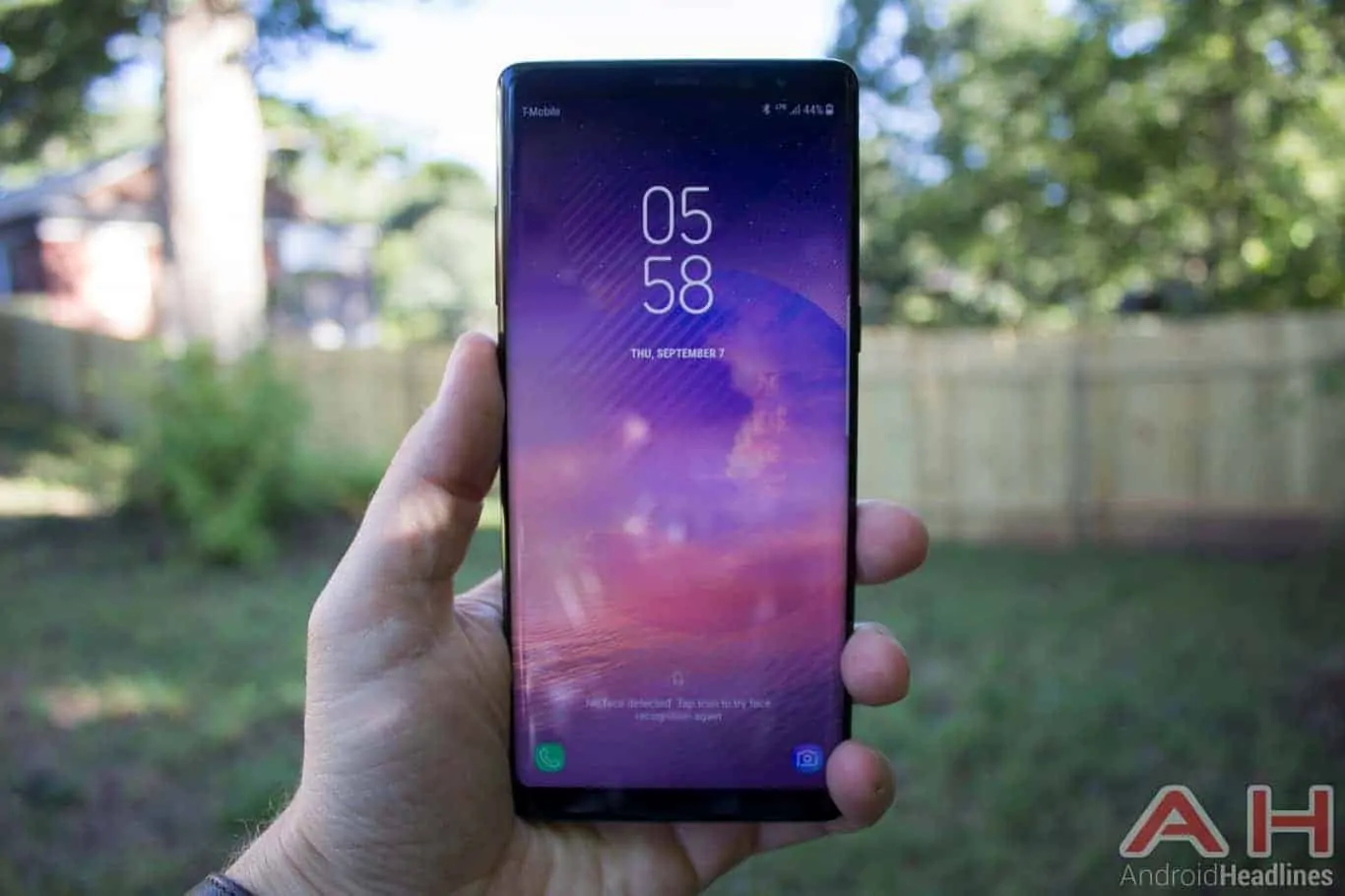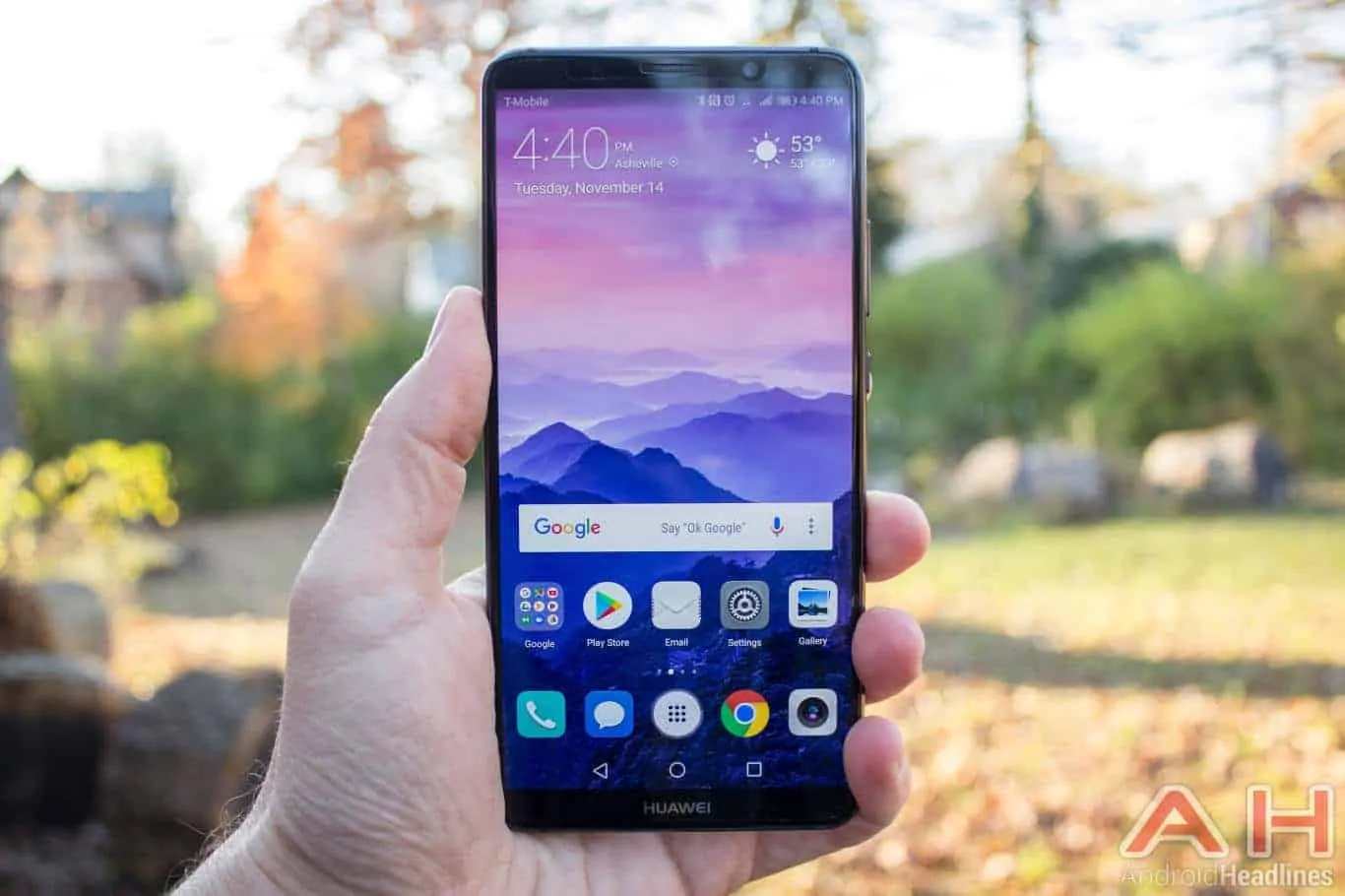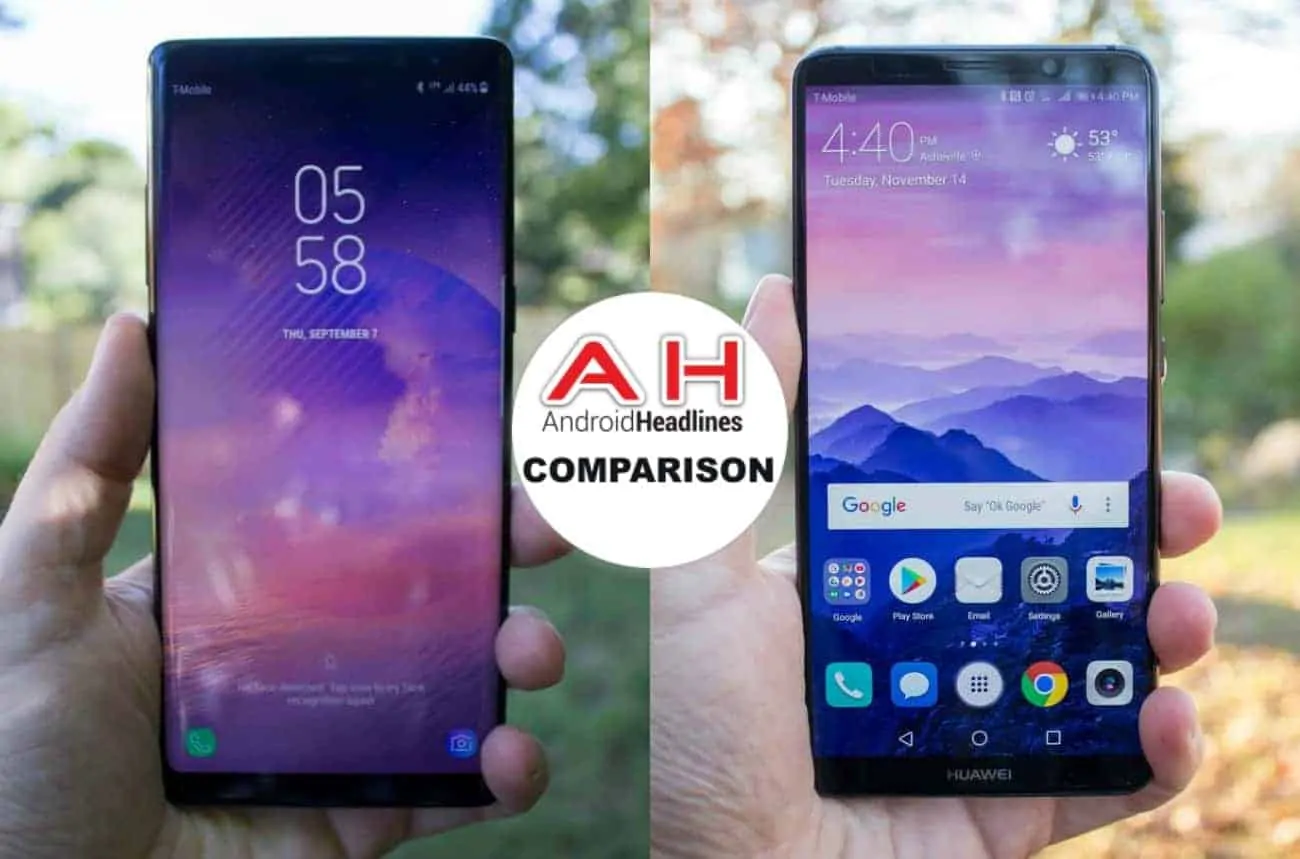Introduction
Do we have a good one for you today – the Samsung Galaxy Note 8 takes on the Huawei Mate 10 Pro in the battle of large AMOLED displays, dual-cameras, and features galore. The Note 8 goes after users that demand the best and love their S Pens. The Mate 10 Pro goes after the audio/photography group with stereo speakers and dual Leica camera lenses. Both displays use the 18:9 aspect ratio and both have small top and bottom bezels. These are the top flagships of their respective manufacturers and represent the pinnacle of technology. These two devices have some powerful technology going for them and even a few things in common. We will look at what characteristics they share before we examine each individual device.
The Galaxy Note 8 and the Mate 10 Pro both share an AMOLED display that is 6-inches or better in size, HDR10 Compliant, an 18:9 aspect ratio, and protected by Gorilla Glass 5. Both devices use a top-notch processor and GPU, as well as packing 6GB of DDR4 RAM. They both use a dual camera configuration, although the Mate 10 Pro supplies its secondary camera with a monochrome sensor, but both us an 8-megapixel front-facing camera (FFC). The batteries are both non-removable and each offers a quick charge option. The Note 8 and Mate 10 Pro are relatively close in physical size with the Note 8 weighing in at 17 grams heavier. Both devices have Bluetooth (v5.0 on the Note 8 and v4.2 on the Mate 10 Pro), WiFi, NFC, a USB Type-C port, and a rear-mounted fingerprint sensor. Both sport Hi-Res audio and are water resistant (IP68 on the Note 8 and IP67 on the Mate 10 Pro. Both devices are beautiful to look at from their glass front or their glass back – the Mate 10 Pro’s coating really helps prevent fingerprints.
Please take a careful look at the detailed specifications comparison chart below and here you will see just how these two great devices stack up against one another. After that, we will look at each device in greater depth and point out some of its pros and cons. From all of this information, we will try to determine the winner based on specs and execution of design and functions.
Specifications

Samsung Galaxy Note 8
 Samsung’s Galaxy Note 8 is their most beautiful design to date. The new Infinity Display wraps around both edges and seamlessly melts into the metal frame, followed by the Gorilla Glass 5 back. There are no longer physical home buttons on the Note 8 – they are now onscreen buttons. This design move allows the Note 8 to have a very small top and bottom bezel – the small bottom bezel has no function, while the top bezel handles the indicator light, speaker, FFC, and the iris scanner. Samsung moved the flash for the camera in between the camera lens and the fingerprint sensor, making it a little easier to keep your fingerprints off the camera lens – still not the best arrangement. When light is illuminating your face, you can quickly unlock the phone with its facial recognition or the iris scanner (if you do not wear glasses). However, for those darker times, you can always fall back on using a pin for unlocking the Note 8. Samsung continued to make the S Pen and software more productive and easier to use. The Galaxy Note 8 is arguably the best looking and most feature-laden smartphone on the market, however, all of this technology comes at a cost of approximately $960.
Samsung’s Galaxy Note 8 is their most beautiful design to date. The new Infinity Display wraps around both edges and seamlessly melts into the metal frame, followed by the Gorilla Glass 5 back. There are no longer physical home buttons on the Note 8 – they are now onscreen buttons. This design move allows the Note 8 to have a very small top and bottom bezel – the small bottom bezel has no function, while the top bezel handles the indicator light, speaker, FFC, and the iris scanner. Samsung moved the flash for the camera in between the camera lens and the fingerprint sensor, making it a little easier to keep your fingerprints off the camera lens – still not the best arrangement. When light is illuminating your face, you can quickly unlock the phone with its facial recognition or the iris scanner (if you do not wear glasses). However, for those darker times, you can always fall back on using a pin for unlocking the Note 8. Samsung continued to make the S Pen and software more productive and easier to use. The Galaxy Note 8 is arguably the best looking and most feature-laden smartphone on the market, however, all of this technology comes at a cost of approximately $960.
The Galaxy Note’s display increased from 5.7-inches to 6.3-inches and now uses their Infinity Display. The aspect ratio went from 16:9 to 18.5:9 and kept Samsung’s Super AMOLED technology. The display uses a QHD+ display with a pixel resolution of 2960 x 1440 that generates 521 pixels-per-inch (PPI). The Note 8’s default is set to an FHD+ (2220 x 1080) resolution to save battery life – just go into the display settings to increase it to the QHD+ resolution. Samsung uses their ‘always-on’ display that not only saves battery life, but makes it easier and quicker for the user to check their notifications.
Samsung uses two of the latest processor in the Galaxy Note 8 – US/China models use Qualcomm’s latest processor, the Snapdragon 835 octa-core processor a quad core clocked at 1.9GHz and a quad core clocked at 2.35GHz, paired with an Adreno 540 GPU. For EMEA countries, Samsung uses its excellent Exynos 8895 octa-core clocked at 2.3GHz and the Mali-G71 MP20 GPU for graphics – both processors use the new 10nm technology. The Galaxy Note 8 packs 6GB of DDR4 RAM – the same amount in the Mate 10 Pro – that helps contributes to its fast and smooth operation and ease of multitasking. It has 64GB of expandable memory via a microSD card.
Samsung finally started their use of dual cameras on the Note 8 and will probably include them on every flagship from here on out with hopefully more functionality. The Note 8 comes with dual 12-megapixel cameras with the main camera including a large aperture of f/1.7 for low light conditions, PDAF, a dual-tone LED flash, auto HDR, OIS, and 2X Optical Zoom. You can get as high as 10X by pinching the screen, but that is a digital zoom. Samsung uses the same great specs on the secondary camera with the exception of a smaller, f/2.4 aperture. The primary camera handles most all of your photo shots, while the secondary camera comes into play if the user wants to create photos with a bokeh effect. Samsung uses a nice sized 8-megapixel FFC with a large f/1.7 aperture, auto-HDR, and even provides autofocus. The non-removable 3,300mAh battery should easily make it through the day and when you do need to charge the Note 8, it features Samsung’s Adaptive Fast Charging and Quick Wireless Charging for both Qi and PMA formats.
The Note 8 has so many features that many users will never even explore them all. One is the DeX Station (an optional purchase) that will allow you to interface the Galaxy Note 8 with a monitor, keyboard, and mouse to give you a near-desktop experience – a little more complicated than Mate 10 Pro’s one-cable set up. Another option is Samsung Connect that allows you to control Samsung’s appliances. Samsung also developed its own personal assistant, Bixby, to combat Apple’s Siri and Google’s Assistant. The Galaxy Note 8 carries Samsung’s popular heart rate monitor and oxygen saturation sensor. One of the best things about a Samsung device is that it allows you not only have access to Android Pay but also Samsung Pay, which opens up even more possibilities to make mobile payments. The Galaxy Note 8 series is IP68 certified against dust and water. The one item that sets the Note 8 apart from other smartphones is its S Pen and associated apps. Both the S Pen and the software get better every rendition – the Note 8 makes it easier than ever to use the S Pen. It arrives with Android 7.1.1 Nougat, measures 162.5 x 74.8 x 8.6 mm, and weighs in at a hefty 195 grams. It is available in Midnight Black, Orchid Grey, Maple Gold, or Deep Sea Blue depending where you are located. The Galaxy Note 8 will cost about $960 outright and is available for purchase from just about everywhere.
Huawei Mate 10 Pro
 Huawei makes a nice looking and well-built device. The Huawei Mate 10 Pro is evidence of their design philosophy and is one of the best-looking smartphones on the market today – in fact, only the Samsung Galaxy Note 8 challenges its look. Huawei surpassed Apple in September to rank second to only Samsung in world smartphone sales, yet it is still almost completely unknown in the U.S. It looks like AT&T will sell the new Mate 10 Pro as Huawei tries to grab a foothold in the world’s largest flagship market. This all-glass beauty with a metal frame should be in AT&T stores this December, according to recent reports. Other than its 1080p display, lack of memory expansion, poor photo software, and no 3.5mm headphone jack, the Mate 10 Pro has a high-end Kirin 970 processor and Mali-G72 MP12 GPU that can easily take on the Snapdragon 835/Adreno 540 combo found in the Note 8. Its Leica-made dual-camera setup ranks only second to the Google Pixel 2 models and its huge 4,000mAh battery will easily last you through the day and then some. Let’s see just how the powerhouse that is the Mate 10 Pro holds up to the Galaxy Note 8.
Huawei makes a nice looking and well-built device. The Huawei Mate 10 Pro is evidence of their design philosophy and is one of the best-looking smartphones on the market today – in fact, only the Samsung Galaxy Note 8 challenges its look. Huawei surpassed Apple in September to rank second to only Samsung in world smartphone sales, yet it is still almost completely unknown in the U.S. It looks like AT&T will sell the new Mate 10 Pro as Huawei tries to grab a foothold in the world’s largest flagship market. This all-glass beauty with a metal frame should be in AT&T stores this December, according to recent reports. Other than its 1080p display, lack of memory expansion, poor photo software, and no 3.5mm headphone jack, the Mate 10 Pro has a high-end Kirin 970 processor and Mali-G72 MP12 GPU that can easily take on the Snapdragon 835/Adreno 540 combo found in the Note 8. Its Leica-made dual-camera setup ranks only second to the Google Pixel 2 models and its huge 4,000mAh battery will easily last you through the day and then some. Let’s see just how the powerhouse that is the Mate 10 Pro holds up to the Galaxy Note 8.
Huawei jumped to the new 18:9 aspect ratio, but still only delivers a 1080p resolution on its display – probably in an effort to save battery life, but I doubt that the 4,000mAh battery size would break a sweat with a QHD display. The AMOLED display is 6-inches with a resolution of 2160 x 1080 pixels giving it a density of 402 PPI, but there is no secondary display for notifications. Corning’s Gorilla Glass 5, the usual choice for premium smartphones, provides protection.
Huawei uses their new Kirin 970 octa-core processor with one quad-core clocked at 1.8GHz and a second quad-core clocked up to 2.4GHz. The new Mali-G72 GPU is used for outstanding graphics. This combination stacks up nicely against the Snapdragon 835 and Adreno 540 used in the Note 8. The Mate 10 Pro packs 6GB of DDR4 RAM, allowing smoother operations and multitasking. It packs a nice 128GB of internal memory but has no means to expand it. A model with 4GB of RAM and 64GB of storage space is also offered by Huawei in some markets but presumably will not come to the U.S.
Huawei’s dual-camera is one of the highest-rated on a smartphone. Working in tandem with Leica, the Mate 10 Pro has a 12-megapixel main sensor along with a 20-megapixel monochrome sensor – each mounted behind a lens with a large aperture of f/1.6, OIS, 2x optical zoom, PDAF and laser autofocus, and a dual-tone LED flash. With the emergence of black and white photography, you can get some fantastic B&W shots with the Mate 10 Pro. Its FFC is an 8-megapixel unit with an aperture of f/2.0 for selfies and video chatting. A 4,000mAh non-removable battery with fast charging powers the device. The glass back eliminated the chance of a removable battery but opened the door to the IP67 dust and water resistance certification, though Huawei chose not to include wireless charging.
The Huawei Mate 10 Pro is an excellent smartphone and is packing a very good sound package that comes with stereo speakers, but no 3.5mm headphone jack, though Huawei does provide an adapter to go from the Type-C port to a 3.5mm plug. Otherwise, you will need a good set of Bluetooth headphones. The Mate 10 Pro comes with support for the older Bluetooth 4.2 standard but features an IR blaster and NFC. The rear-mounted fingerprint sensor is as quick as ever to unlock your device. The Mate 10 Pro measures 154.2 x 74.5 x 7.9mm and weighs in at 178 grams. The Mate 10 Pro comes in your choice of Midnight Blue, Titanium Gray, Mocha Brown, and Pink Gold and ships with Android 8.0 Oreo enhanced with Huawei’s EMUI 8.0. The Mate 10 Pro will cost you approximately $945 outright, although if purchased through AT&T you will be able to finance the device on a plan.
…And The Winner Is…

The Final Word
While the Huawei Mate 10 Pro is an outstandingly beautiful and capable smartphone, I have to crown the Samsung Galaxy Note 8 as the winner of this comparison. Both devices cost about the same amount and it simply seems like you get more for your money with the Note 8.
The Note 8 has a larger display, Samsung’s Super AMOLED QHD display – along with an Always-On notifications display. It has an equal processor/GPU, the same amount of RAM and, more importantly, expandable memory. It has a great camera area and uses auto-HDR for all of its shots. It does not have stereo speakers, but it does retain its 3.5mm headphone jack. The Note 8 has facial recognition, a heart rate sensor, SpO2 sensor, an iris scanner, newer Bluetooth, wireless charging, Bixby, Samsung Pay, and is available for all US carriers. We have to mention the S Pen and all of the possibilities it brings with the Note 8.
The Huawei Mate 10 Pro is an outstanding device that packs a great SoC/GPU, a monochrome camera, stereo speakers, an IR Blaster, a larger battery, Knuckle gestures, and Desktop projection. It is missing a 3.5mm headphone jack, but they supply a dongle to adapt from the Type-C port to a 3.5mm jack, the display, while AMOLED is only 1080p, no WiFi calling support, nor support for Daydream VR. The camera technology is great, but it is lacking in the camera software area, and its NPU AI processing chip needs some refinement, but promises a great future.
Buy The Samsung Galaxy Note8

